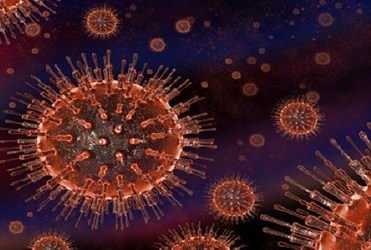FDA Authorizes Emergency Use Of Two IVDs For Zika Virus Detection, Clinical Trial For Experimental Vaccine
By Jof Enriquez,
Follow me on Twitter @jofenriq

The U.S. Food and Drug Administration (FDA) has announced the issuance of Emergency Use Authorizations (EUAs) for two in vitro diagnostic (IVD) devices for detection of Zika virus. The EUAs were based on prior determination by the Secretary of Health and Human Services (HHS) that the present Zika outbreaks in the Americas constitute a public health emergency, and pose a threat to U.S. national security or the health and security of U.S. citizens.
FDA said in a notice in the Federal Register that it issued on April 28, 2016 an EUA to Focus Diagnostics, Inc. for the company's Zika Virus RNA Qualitative Real-Time RT-PCR test; On May 13, 2016, FDA issued an EUA to Altona Diagnostics GmbH for its RealStar Zika Virus RT-PCR Kit U.S.
According to the Centers for Disease Control and Prevention (CDC), Focus Diagnostics’ Zika testing is limited to Quest Diagnostic Laboratories, with serum as acceptable specimen, and detects the Zika virus only. Altona's testing is limited to Clinical Laboratory Improvement Amendments (CLIA)-certified laboratories that perform high-complexity tests, which includes serum and urine specimen, and detects Zika virus only.
This brings to five the number of EUAs that FDA has issued, so far, to help address the Zika virus outbreak. The agency website also indicates that an EUA was issued on Feb. 26, 2016 to CDC's Zika Immunoglobulin M (IgM) Antibody Capture Enzyme-Linked Immunosorbent Assay (Zika MAC-ELISA) for the presumptive detection of Zika virus-specific IgM in human sera or cerebrospinal fluid (CSF) that is submitted alongside a patient-matched serum specimen.
Another EUA was issued on March 17, 2016 for CDC's Trioplex Real-time RT-PCR Assay (Trioplex rRT-PCR) for the qualitative detection and differentiation of RNA from Zika virus, dengue virus, and chikungunya virus in human sera or cerebrospinal fluid (collected alongside a patient-matched serum specimen), and for the qualitative detection of Zika virus RNA in urine and amniotic fluid (each collected alongside a patient-matched serum specimen).
FDA this week also approved for emergency use Hologic, Inc.'s Aptima Zika Virus assay for the qualitative detection of RNA from Zika virus in human serum and plasma specimens tested by CLIA-certified laboratories. FDA subsequently authorized Hologic (in partnership with Grifols) to screen the U.S. blood supply with the companies' Procleix Zika Virus Assay under the agency's Investigational New Drug (IND) study protocol. Blood centers in potential endemic areas of the southern U.S. are initial target areas.
Other research groups are creating rapid diagnostic tests for Zika. An interdisciplinary team of scientists at the University of Alberta is working to modify a handheld glucometer that can distinguish between dengue fever and Zika. Meanwhile, scientists at the Wyss Institute for Biologically Inspired Engineering at Harvard University are developing a low-cost, paper-based diagnostic system for strain-specific detection of the Zika virus.
Medical researchers and health authorities are hoping that rapid and economical diagnostic tests could help stem the spread of the mosquito-borne Zika virus, which has been linked to birth defects, such as microcephaly. According to CDC, as of June 15, 2016, there were 756 Zika virus disease cases reported in U.S. states and the District of Columbia, and 1,440 cases in U.S. Territories. As of June 16, 2016, 39 countries and territories have confirmed local, vector-borne transmission of Zika virus disease in the Region of the Americas since 2015, according to the World Health Organization (WHO).
While Zika may prove to be a lesser threat than Ebola, FDA nevertheless is acting with a sense of urgency, approving on Monday for the first time a clinical trial, by Inovio Pharmaceutical, for an experimental vaccine. According to STAT, Inovio's GLS-5700 is a vaccine that is DNA-coded to produce the protein that surrounds the Zika virus. A device delivers a short electrical pulse in the injection site to guide DNA into cells, which "start the process of training the immune system to see the Zika virus as a foreign invader that needs to be attacked, generating antibodies to fight it," reports STAT. WHO had said earlier that 18 companies and laboratories are working on a Zika vaccine.
